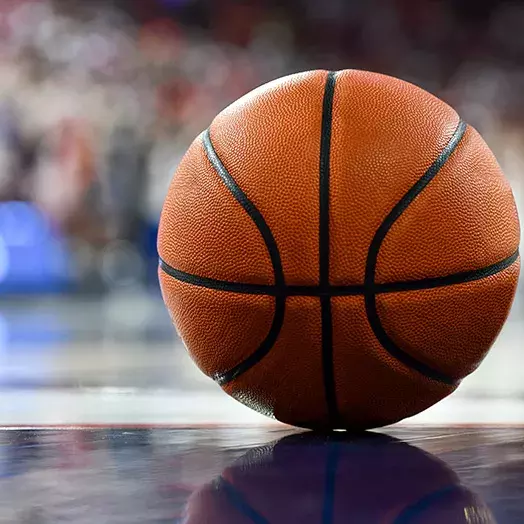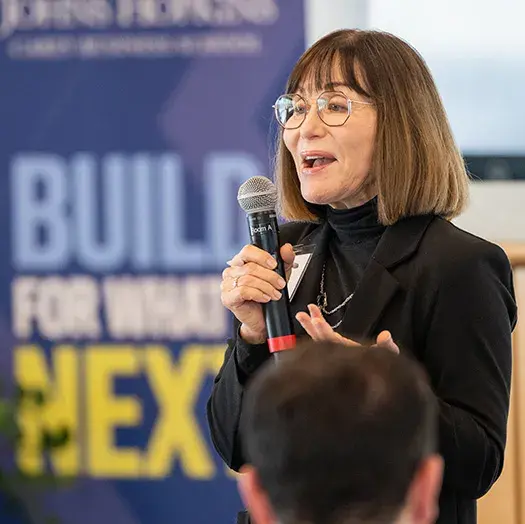Carey Associate Professor of Economics Christina DePasquale shares some insights into the rise of the NCAA women’s basketball tournament.

History made: The rise of the NCAA women’s basketball tournament
After a powerhouse NCAA Women’s Basketball Tournament, fans are more excited than ever for today’s WNBA draft. University of Iowa phenom Caitlin Clark is projected to clinch the top pick. Arguably one of today’s best collegiate athletes, she drove fans to frenzy with her history-making takeover of the top-scorer list for both men and women. But according to a sports economics expert at Johns Hopkins Carey Business School, she’s not the only reason women’s basketball is getting legs, and her move to the WNBA won’t tank the new enthusiasm for college women’s teams.
Carey Associate Professor Christina DePasquale points to some economic underpinnings that explain why, and highlights how the historical moment in women’s collegiate sports came about.
The “superstar effect”
Yes, the most obvious reason women’s basketball has amped up this year is the “the superstar effect,” which is the popularity increase from which organizations benefit when an exceptionally high-profile person is involved—whether they’re a player or not. For example, when pop star Taylor Swift started dating NFL player Travis Kelce last year, the NFL’s female viewership hit an all-time high, solely due to Swift’s new association with the brand.
But DePasquale says that while Caitlin Clark attracted a lot of additional fans, she isn’t the only reason they stuck around throughout the 2024 tourney.
“Sure, she may be the biggest household name, but for people who turned the tournament on and watched most of it, they were able to recognize some of the other great athletes that will still be around next year,” DePasquale said. “Viewers are going to be looking out for the next superstar when they tune in again, and there will be another to keep the momentum going.”
The right to be compensated
Such a large boost in popularity for the women’s NCAA tournament can’t be fully attributed to Clark’s superstardom. DePasquale says the effect of the NIL policy is also a key player. Short for “name, image, and likeness,” the policy allows student-athletes to profit from their own personal brand.
DePasquale says this has significantly improved the visibility of women’s basketball. NIL may be enticing star players like Clark to stay in collegiate sports for a bit longer, or for the entirety of their eligible competing years, to make more money. Student-athletes, but more specifically women student-athletes, are seeing opportunities for compensation that have never been available to them before.
“There are college athletes making way more In NIL than they would make even if they were the highest paid athlete in the WNBA,” DePasquale explained.
Such a shift has drawn long-deserved attention to the women’s game in recent years, and that attention will only increase as NIL continually provides more brand awareness for players and teams.
The beginning of a new era
The women’s NCAA championship game last Sunday had 18.9 million viewers, while the men’s championship only drew 14.8 million viewers. Last month, the get-in ticket price, which is what the lowest ticket cost is just to get in, of the Women’s Final Four surpassed that of the Men’s Final Four by 38%, according to TheStreet.
“The atmosphere has increased, rivaled, and perhaps surpassed the excitement for this year’s men’s tournament so much that it might have encouraged more and more people to tune in and see what the buzz is about,” said DePasquale.
What to Read Next
And DePasquale expects the popularity of women’s basketball to continue to grow, causing other big shifts in the business. For example, the NCAA’s television contract for women’s basketball with ESPN is a $920 million, eight-year deal and is bundled to include other sports like baseball and lacrosse. The NCAA’s television contract for men’s basketball with CBS is an $8.8 billion, eight-year deal.
“When the women’s contract was first negotiated, it seemed like a great contract relative to the growth and popularity of the sport at the time, but now, it’s apparent that the current women’s contract is undervalued at this amount,” she said. “Perhaps, when this contract is up, we’ll see the NCAA negotiate women’s basketball television rights separately in the competitive market, to get more money for the sport.”
And might it all empower women who go pro to negotiate bigger contracts, too? It’s possible.
“The highest paid player in women’s basketball makes a great salary for a traditional job, but significantly less than male professional athletes make,” DePasquale pointed out.



